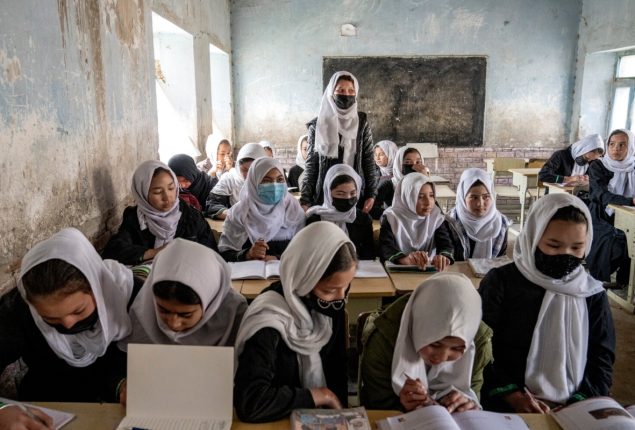International Cooperation Key Focus in National Space Council Session
Space Council: Commits to global partnerships. Artemis Update: Harris includes global astronauts....

UN seeks confirmation on girls’ education in religious schools in Afghanistan
The United Nations is working to confirm reports suggesting that the Taliban, who currently govern Afghanistan, are permitting girls of all ages to attend Islamic religious schools that have traditionally been exclusively for boys.
Roza Otunbayeva, the UN special envoy, shared this information with the UN Security Council and further explained to reporters that the UN is gathering increasing anecdotal evidence indicating that girls are being allowed to study at these schools, commonly known as madrassas.
“It is not entirely clear, however, what constitutes a madrassa, if there is a standardized curriculum that allows modern education subjects, and how many girls can study in madrassas,” she said.
The Taliban have faced widespread international criticism for prohibiting girls and women from attending secondary school and university. The current policy allows girls to study only up to the sixth grade. Despite assurances from Taliban education authorities on working towards conditions that would permit girls to resume schooling, there is growing concern that significant time is passing, causing a generation of girls to lag in their education.
She said that the Taliban Ministry of Education is reportedly undertaking an assessment of madrassas as well as a review of public school curriculum and warned that the quality of education in Afghanistan “is a growing concern.”
“The international community has rightly focused on the need to reverse the ban on girls’ education,” Otunbayeva said, “but the deteriorating quality of education and access to it is affecting boys as well.”
“A failure to provide a sufficiently modern curriculum with equality of access for both girls and boys will make it impossible to implement the de facto authorities’ agenda of economic self-sufficiency,” she added.
A Human Rights Watch report earlier this month said the Taliban’s “abusive” educational policies are harming boys as well as girls.
The exit of qualified teachers, particularly women, along with regressive curriculum alterations and a rise in corporal punishment, has heightened apprehension about attending school and resulted in declining attendance, according to the report. With the Taliban removing all female teachers from boys’ schools, many boys are either taught by unqualified individuals or find themselves in classrooms without any teachers at all.
Turning to human rights, Otunbayeva said that the key features in Afghanistan “are a record of systemic discrimination against women and girls, repression of political dissent and free speech, a lack of meaningful representation of minorities, and ongoing instances of extrajudicial killing, arbitrary arrests and detentions, torture and ill-treatment.”
The lack of progress in resolving human rights issues is a key factor behind the current impasse between the Taliban and the international community, she said.
Catch all the International News, Breaking News Event and Latest News Updates on The BOL News
Download The BOL News App to get the Daily News Update & Follow us on Google News.